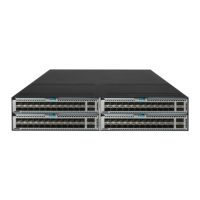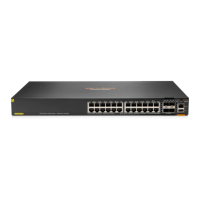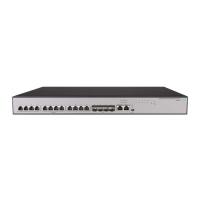31
Step Command Remarks
2. Enter LDP view or enter
LDP-VPN instance
view.
• Enter LDP view:
mpls ldp
• Enter LDP-VPN instance view:
a. mpls ldp
b. vpn-instance
vpn-instance-name
N/A
3. Configure an IPv4 label
advertisement policy.
advertise-label prefix-list
prefix-list-name [
peer
peer-prefix-list-name ]
By default, LDP advertises all
IPv4 FEC-label mappings
permitted by the LSP generation
policy to all peers.
4. Configure an IPv6 label
advertisement policy.
ipv6 advertise-label prefix-list
prefix-list-name [
peer
peer-prefix-list-name ]
By default, LDP advertises all
IPv6 FEC-label mappings
permitted by the LSP generation
policy to all peers.
42B
Configuring a label acceptance policy
A label acceptance policy uses an IP prefix list to control the label mappings received from a peer.
As shown in
696HFigure 16, LSR A uses an IP prefix list to filter label mappings from LSR B, and it does
not filter label mappings from LSR C.
Figure 16 Label acceptance control diagram
A label advertisement policy on an LSR and a label acceptance policy on its upstream LSR can
achieve the same purpose. As a best practice, use the label advertisement policy to reduce network
load.
You must create an IP prefix list before you configure a label acceptance policy. For information
about IP prefix list configuration, see Layer 3—IP Routing Configuration Guide.
To configure a label acceptance policy:
Step Command Remarks
1. Enter system view.
system-view
N/A
2. Enter LDP view or enter
LDP-VPN instance
view.
• Enter LDP view:
mpls ldp
• Enter LDP-VPN instance view:
a. mpls ldp
N/A
Do no
t
filter label
map
p
ing
s

